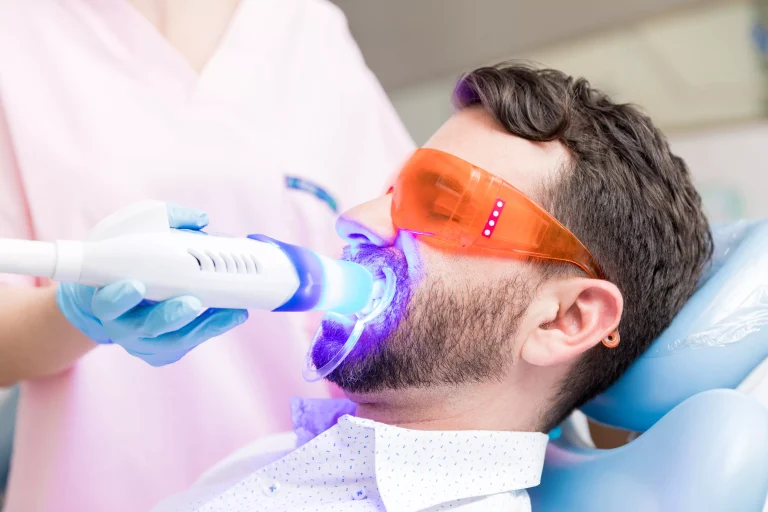This is one of the most common concerns patients bring up, often with embarrassment. I’m Dr. Emily Nguyen from Picasso Dental Clinic, and I want you to understand that bad breath is usually fixable once we identify the underlying cause, which is almost always related to oral health rather than systemic disease.
Poor Oral Hygiene and Bacterial Buildup
The bacteria living in your mouth are the direct source of bad breath odor. These bacteria feed on food particles, dead cells, and proteins in saliva. As they break down these materials, they release volatile sulfur compounds that smell like rotten eggs or decaying matter. The more bacteria present and the more food available for them, the worse the smell.
When you skip brushing or flossing, bacteria accumulate rapidly. Food particles trapped between teeth decompose and provide fuel for bacterial growth. The film of plaque building on teeth surfaces harbors millions of bacteria producing odor continuously throughout the day.
At our Hanoi clinic, I can often identify poor hygiene immediately during examination. Heavy plaque deposits, inflamed gums, and visible food debris between teeth correlate directly with bad breath complaints. The solution is straightforward: thorough brushing twice daily, flossing once daily, and regular professional cleanings.
Your tongue harbors enormous bacterial populations, particularly on the rough back surface. That white or yellow coating you might notice on your tongue is actually bacteria, dead cells, and food debris. Gently brushing or scraping your tongue daily removes this coating and dramatically improves breath.
Many patients brush their teeth but completely neglect tongue cleaning. This is like mopping the floor while leaving dirty walls. The tongue’s surface area is substantial, and bacteria thriving there contribute significantly to breath odor.
Gum Disease as a Major Culprit
Gum disease affects roughly half of adults to some degree and causes persistent bad breath that doesn’t respond to brushing alone. The infection creates pockets between teeth and gums where bacteria accumulate beyond the reach of your toothbrush.
These periodontal pockets contain anaerobic bacteria that thrive without oxygen and produce particularly foul-smelling sulfur compounds. The deeper the pockets, the worse the smell. Patients with advanced gum disease often describe a constant bad taste and odor that embarrasses them socially.
Bleeding gums add another dimension to the problem. Blood provides additional protein for bacteria to feed on, intensifying odor production. The metallic taste of blood combines with bacterial odors to create the characteristic smell of periodontal disease.
I treat gum disease regularly at Picasso Dental Clinic locations serving patients from 65 nationalities. The good news is that professional deep cleaning combined with improved home care usually resolves the infection and eliminates associated bad breath within weeks.
Ignoring gum disease worsens both the infection and the breath problem. Early treatment is simpler and more effective than waiting until advanced stages when bone loss and tooth mobility develop.
Dry Mouth and Saliva’s Protective Role
Saliva is your mouth’s natural cleaning system. It washes away food particles, neutralizes acids, and contains antibacterial compounds that control bacterial populations. When saliva production decreases, bacteria flourish unchecked and bad breath intensifies.
Dry mouth has many causes. Medications, particularly those for blood pressure, depression, anxiety, and allergies, commonly reduce saliva flow. Mouth breathing during sleep, dehydration, aging, and certain medical conditions also decrease saliva production.
Morning breath affects everyone because saliva production drops dramatically during sleep. Bacteria multiply overnight without saliva’s cleansing action, creating the unpleasant smell you notice upon waking. This is normal and resolves after brushing and eating breakfast, which stimulates saliva flow.
Chronic dry mouth requires active management. Drinking water frequently, chewing sugar-free gum to stimulate saliva, avoiding alcohol and caffeine that worsen dryness, and using saliva substitutes all help. At our Ho Chi Minh City and Da Nang clinics, I work with patients to identify dry mouth causes and develop management strategies.
Some patients breathe through their mouths habitually, especially during sleep. This dries oral tissues and creates bad breath. Addressing nasal congestion or using mouth taping at night can help chronic mouth breathers.
Food, Tobacco, and Lifestyle Factors
Certain foods cause temporary bad breath through volatile compounds absorbed into your bloodstream and released through your lungs. Garlic, onions, coffee, and alcohol create odors that persist for hours after consumption, regardless of how well you brush.
Smoking and tobacco use cause both immediate and chronic bad breath. Tobacco smoke leaves residue on teeth, tongue, and soft tissues. It dries your mouth, promotes gum disease, and creates its own distinctive smell. Smokers often become desensitized to their own breath odor while others notice it immediately.
Crash dieting or fasting produces ketone breath, a sweet, fruity, or acetone-like smell from your body burning fat for energy instead of carbohydrates. This metabolic process releases ketones through your breath. The odor resolves when you resume normal eating patterns.
High-protein, low-carbohydrate diets can create similar ketone breath. While these diets may help with weight loss, the breath side effect bothers many people. Increasing water intake and maintaining excellent oral hygiene minimizes but doesn’t eliminate the problem.
Dental Problems Creating Hidden Odor Sources
Cavities, especially large ones, trap food particles and harbor bacteria in places your toothbrush cannot reach. The decay itself produces odor as bacteria break down tooth structure. Deep cavities close to the nerve often smell particularly bad.
Failed dental work creates similar problems. Crowns or fillings with gaps at the margins collect bacteria and food debris. Old, leaking restorations need replacement to eliminate these bacterial reservoirs.
Infected teeth with dead nerves produce terrible odors that patients often describe as tasting and smelling like something died in their mouth. Root canal treatment or extraction eliminates the infection and associated smell.
If you’re concerned about persistent bad breath despite good oral hygiene, I’m available for comprehensive evaluation at any Picasso Dental Clinic location in Hanoi, Da Nang, Ho Chi Minh City, or Da Lat.




